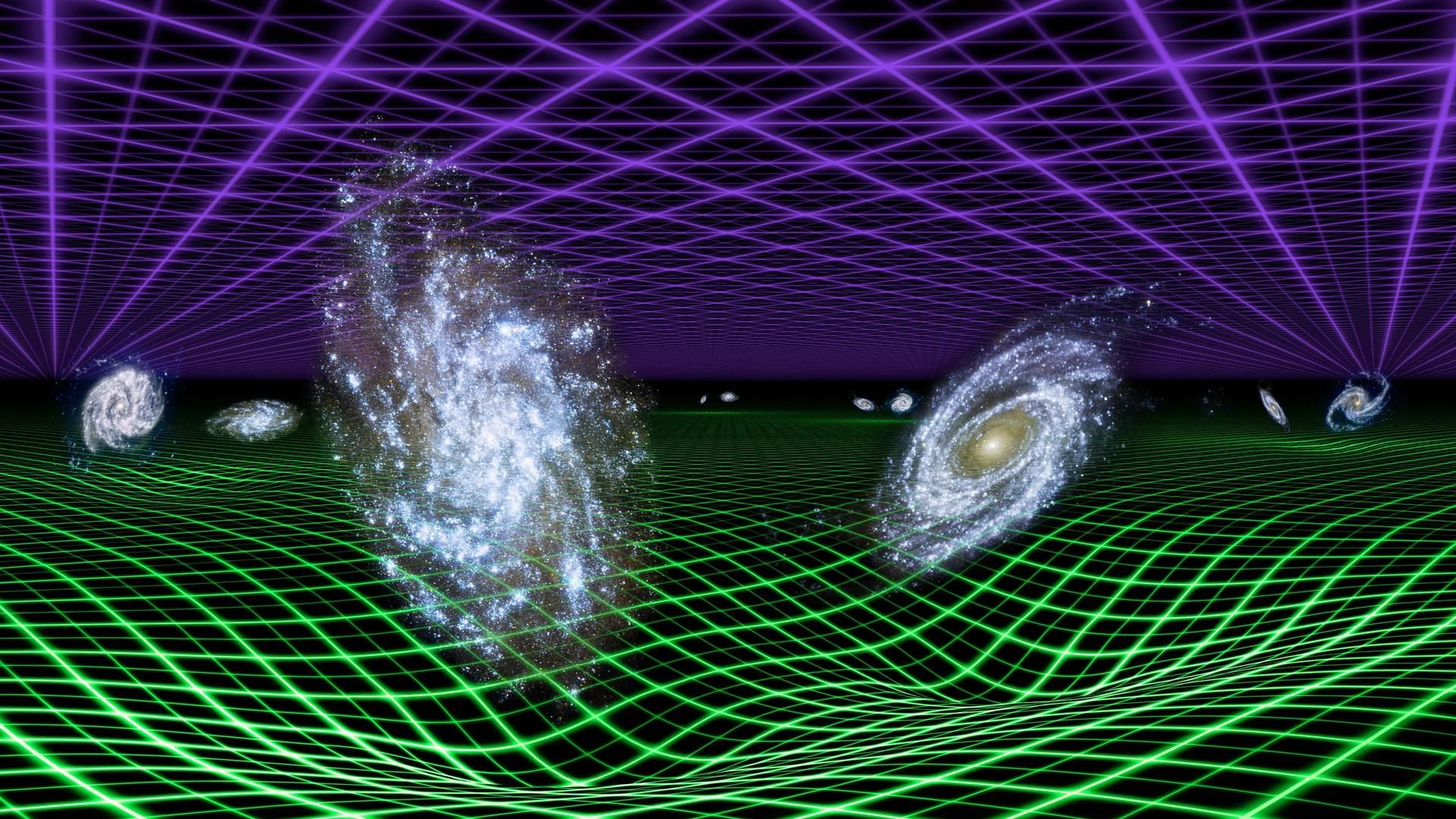Follow us on Google News (click on ☆)

An illustration showing galaxies bending the fabric of space-time in an expanding universe. A new theory suggests that cosmic expansion may not be constant and could abruptly reverse.
Credit: NASA/JPL-Caltech
The standard model of the evolution of the Universe, called ΛCDM, is based on two pillars: dark energy and cold dark matter. This model has explained many observations, such as the structure of galaxies and the cosmic microwave background. However, recent tensions, particularly regarding the Hubble constant and the measurement of matter density, challenge its validity.
One hypothesis to resolve these tensions is that dark energy could be more dynamic than expected. Contrary to the idea of an unchanging cosmological constant, some researchers propose that dark energy underwent a phase transition, shifting from a deceleration phase to an acceleration phase of the Universe's expansion.
In a recent study, a team of researchers explored an even more radical version of this idea. They suggest that dark energy could not only change sign but also strength, leading to either acceleration or deceleration of the Universe. This proposal, although speculative, could explain some of the observed tensions.
To test their model, the researchers used several datasets, including measurements of the cosmic microwave background by the Planck satellite, baryon acoustic oscillations, and supernova observations. Their model appears to alleviate some of the tensions, offering a promising avenue for future research.
However, the authors acknowledge that their model is not yet grounded in known physics. It is more of a theoretical exploration aimed at stimulating new ideas about the nature of dark energy. This approach could encourage theorists to propose mechanisms explaining how such a transition might occur.
In any case, this study highlights that our understanding of the Universe, and particularly of dark energy, is far from complete. Future observations, especially those from the James Webb Space Telescope, could provide answers to these fundamental questions.
What is dark energy?
Dark energy is a hypothetical form of energy that makes up about 68% of the Universe. It is responsible for the acceleration of cosmic expansion, a phenomenon discovered in the late 1990s through observations of distant supernovae.
Unlike dark matter, which exerts gravitational attraction, dark energy appears to act as a repulsive force. Its origin and exact nature remain one of the greatest mysteries of modern cosmology.
Scientists consider several theories to explain dark energy, ranging from a cosmological constant, as proposed by Einstein, to dynamic scalar fields. Each of these theories has profound implications for the ultimate fate of the Universe.
What is the Hubble tension?
The Hubble tension refers to a discrepancy in measurements of the Universe's expansion rate, known as the Hubble constant. Observations of the cosmic microwave background, which date back to the early Universe, yield a lower value than those obtained by studying supernovae in the nearby Universe.
This discrepancy could indicate that our understanding of cosmological physics is incomplete. It has sparked numerous hypotheses, ranging from new forms of dark energy to systematic errors in measurements.
Resolving this tension is important for refining our cosmological model. Future space missions, such as the Euclid telescope, could provide more precise data to settle this question.